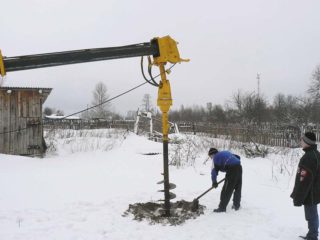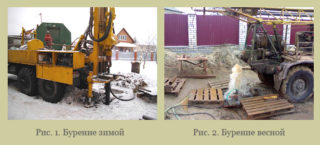In a country house or at a summer cottage, one cannot do without a sufficient amount of water, it is necessary both for household needs and to ensure timely watering of plants. The most modern and convenient to use is the arrangement at the well site, which will provide the house with water without interruption.
Features of winter work and advantages
What are the benefits:
- frozen ground is easy to drill, a small amount of groundwater allows the procedure to be carried out as efficiently as possible;
- the absence of seasonal plantings on the land does not interfere with the installation of equipment and work;
- snow cover helps the technique to get into areas that are flooded with water for a long time in the spring;
- the cost of winter drilling is lower due to the seasonal drop in demand.
When is the best time to drill
Most often, water wells are drilled during the warm season. This is primarily due to the convenience for the site owner, but much less effective than winter drilling.
Winter drilling is carried out in the coldest months, which are December and January. At the same time, professionals recommend that the air temperature does not fall below -20 Celsius.
Disadvantages of winter well drilling
- In case of severe freezing of the soil, the time for carrying out the planned work can greatly increase. The speed of work in frozen ground is much lower than in the warm season.
- Water frozen in a well can disrupt its operation even before commissioning. To prevent this from happening, it is necessary to take measures in advance to insulate both the well itself and the water pipes leading to residential and utility buildings.
For insulation, they most often resort to the use of special multi-layer communications and covers, the so-called segment heaters. Several layers of expanded polystyrene or polyethylene material fit the pipe tightly, preventing it from bursting even if the soil is completely frozen. It is important to note that water and thermal insulation of water pipes must be carried out regardless of the drilling season. A system installed in summer without proper insulation and insulation can lead to rupture in winter due to freezing of water in it.
It is obvious that drilling a well on the site is necessary. However, before starting the design and execution of work, it is worthwhile to carefully study all the pros and cons of the winter drilling option, as well as purchase the necessary heat-insulating material.










